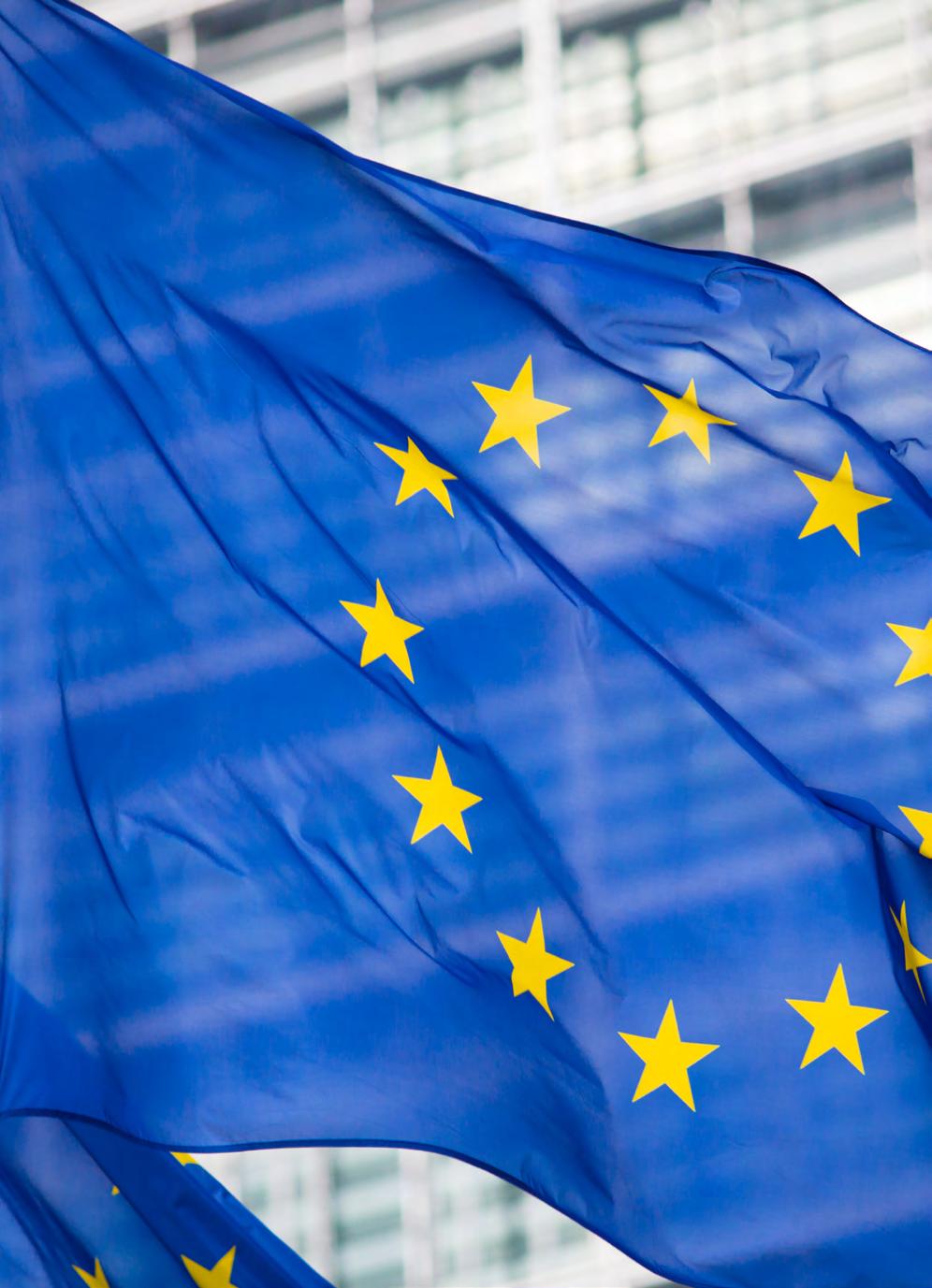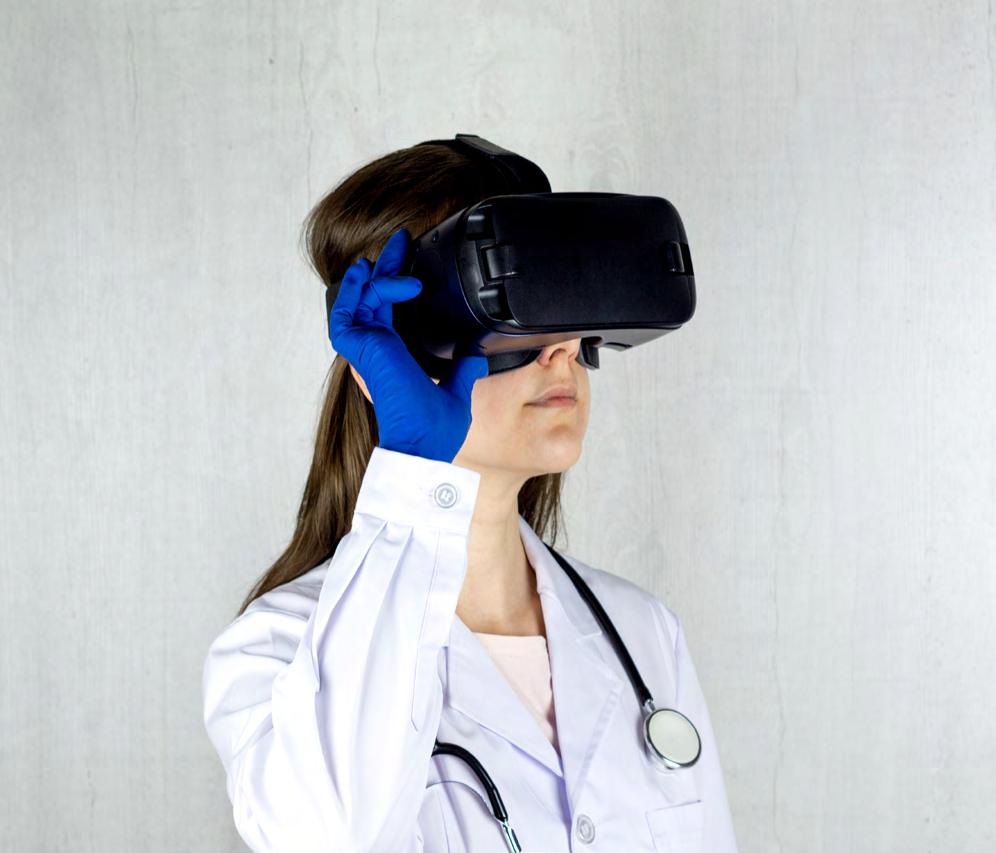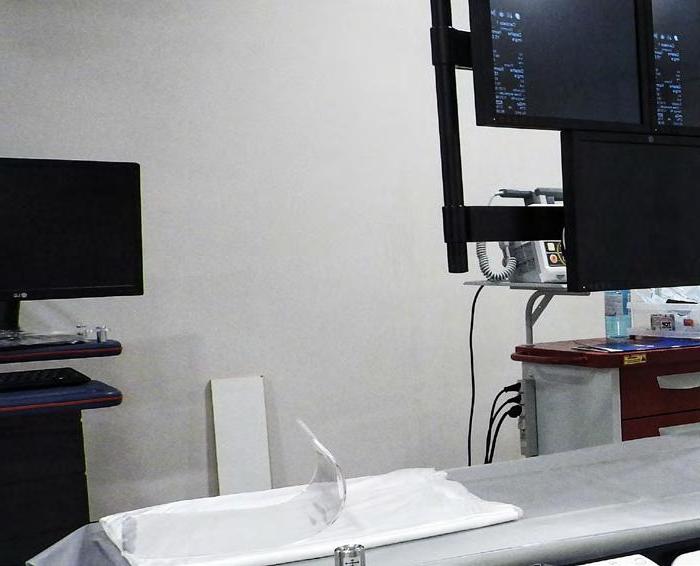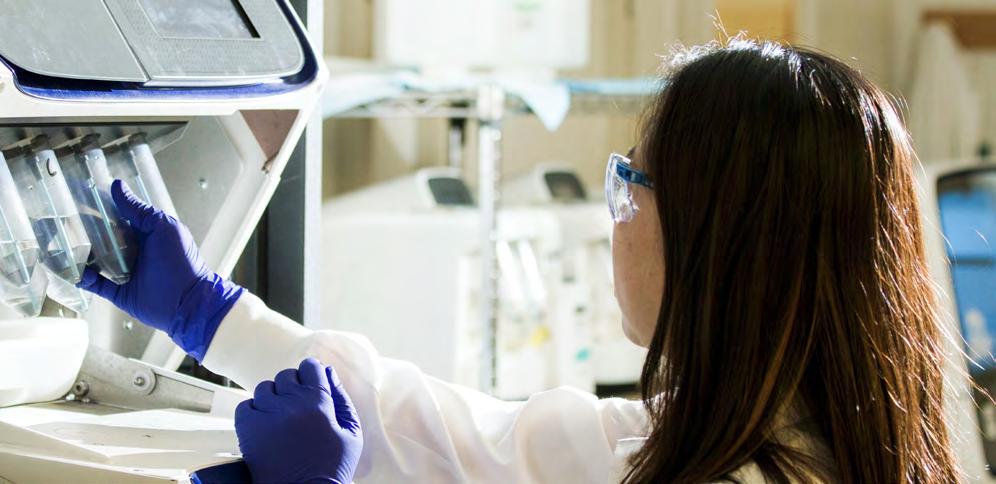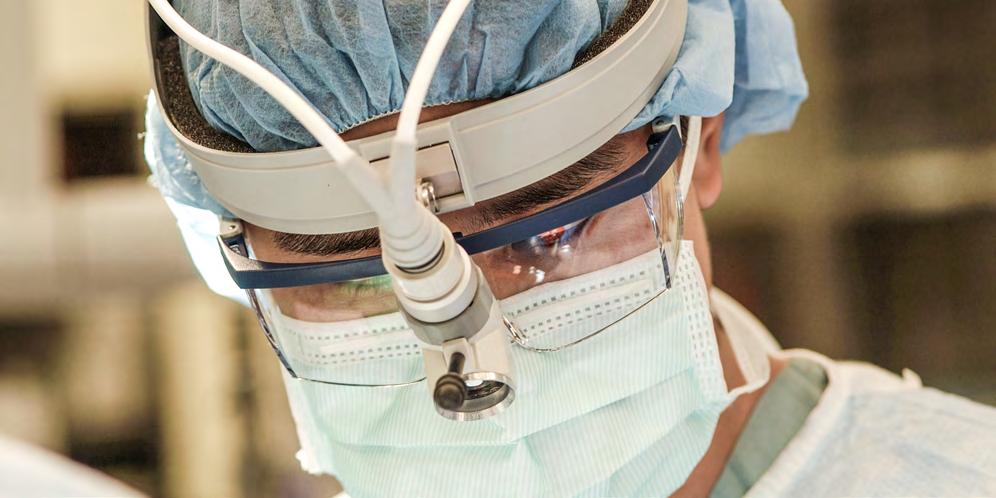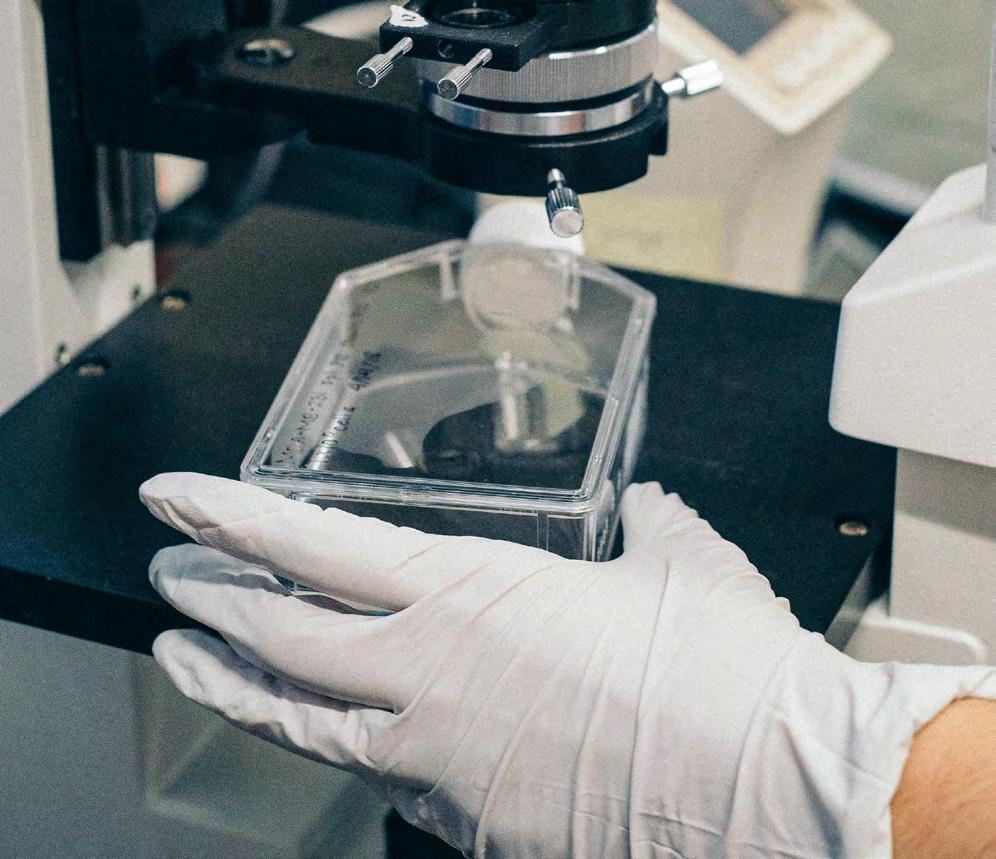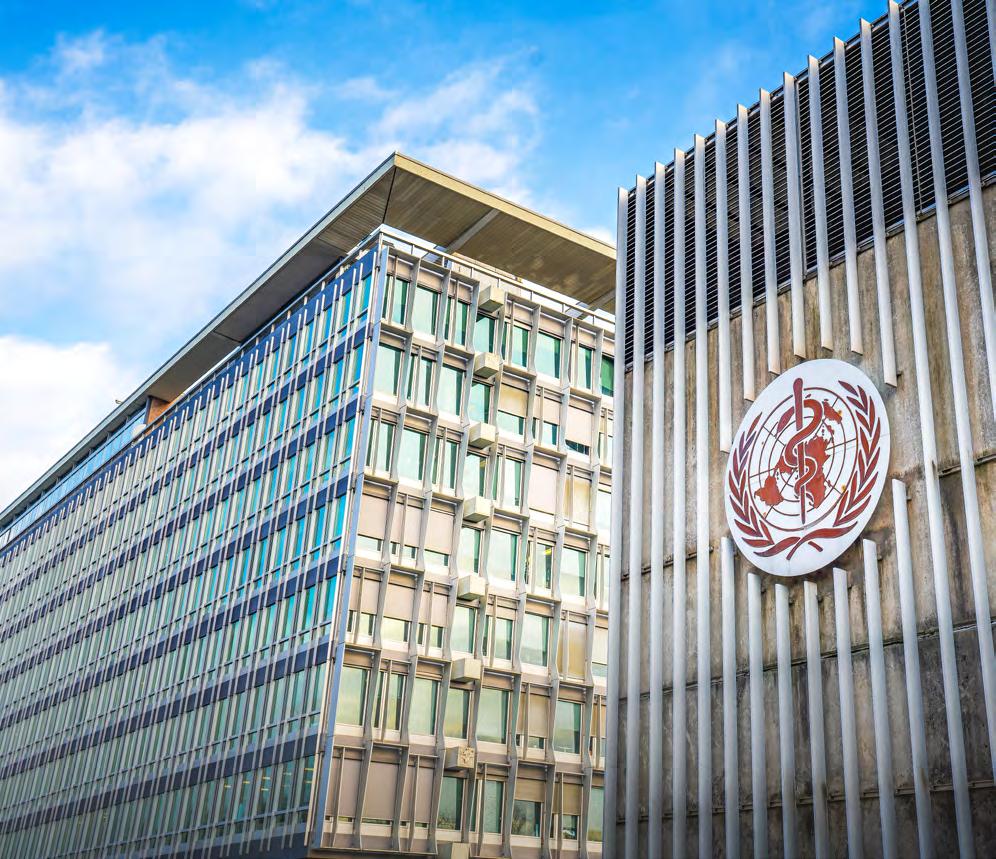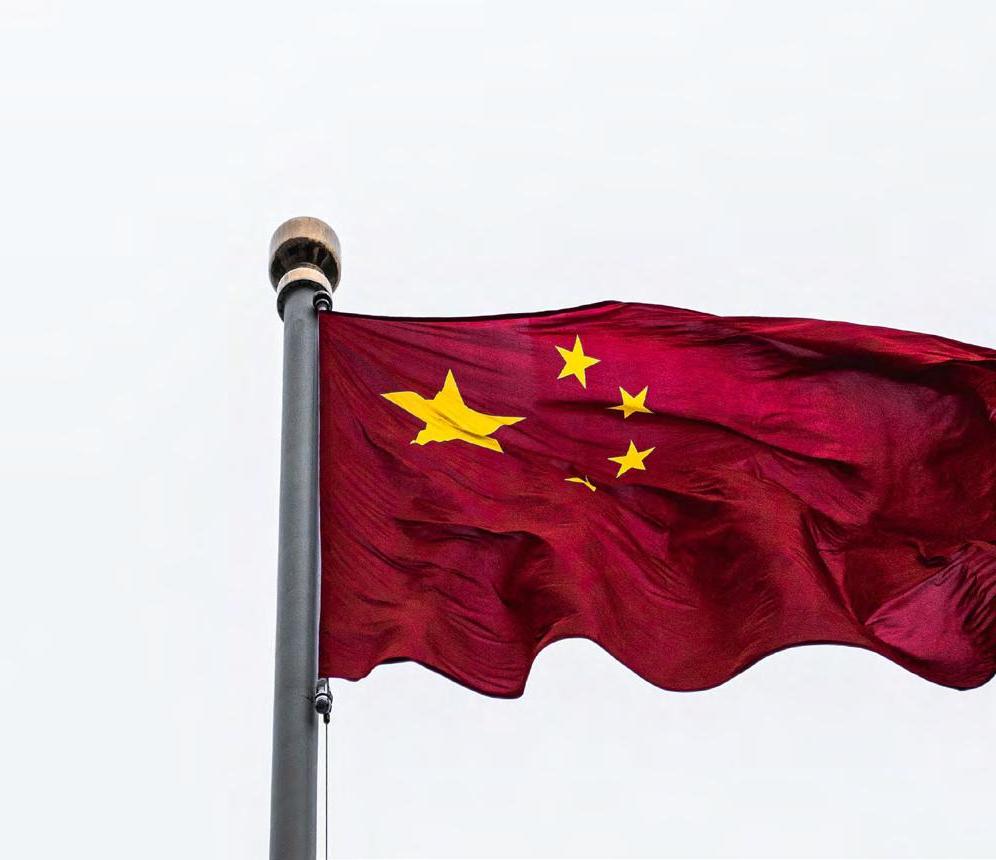
9 minute read
07 Cooperate on regulatorypolicies
Cooperate on regulatory policies
Ensure internationally harmonized, smoothly functioning approval procedures
In the highly regulated health care sector, national regulatory approval procedures ensure the quality of products on the market. They play a critical role in determining if an innovative medical product able to improve diagnosis and treatment will become available to patients. Harmonized quality and approval procedures can facilitate simultaneous product development programs worldwide and ensure quicker availability of products across markets. In addition, smart regulation, well-staffed regulatory authorities, and well-trained personnel help prevent delays in approving much needed new medical products. Better regulatory approval is at the heart of the Chinese government’s reforms.
Core challenges:
.Building capacity: In addition to enormous capacity building efforts, the Chinese government and the
National Medical Products Administration (NMPA) have taken a number of positive, much needed steps toward creating a more smoothly functioning regulatory process. This includes the Opinion on Deepening the Reform of the Review and Approval System
07
and Encouraging the Innovation of Drugs and Medical Devices 117 .
MedTech: The NMPA is moving forward with generally positive reforms to medical device supervision by announcing amendments to Order No. 680. Under the NMPA predecessor, testing institutes in 2017 nevertheless “… received insufficient funding, causing serious delays to the registration of medical devices.” 118 The amendment allowed for use of alternative testing facilities or self-testing reports, a measure that was warmly welcomed as help for remedying this serious industry concern. However, further clarification of the concepts set out in the amendment is required, e.g., which “qualified” testing institutes are recognized and the criteria that self-testing reports need to meet. Furthermore, implementation of the amendment is not yet complete.
–Pharma: Initial achievements include an impressive reduction in the former China Food & Drug Administration´s (CFDA’s) drug application
117
State Council, Opinion on Deepening the Reform of the Review and Approval
System and Encouraging the Innovation of Drugs and Medical Devices, www. gov.cn/gongbao/content/2017/content_5232362 (accessed on 17.07.2020). 118 European Union Chamber of Commerce in China (2018), Healthcare Equipment
Working Group, pp. 240, https://www.europeanchamber.com.cn/en/ publications-archive/727/Healthcare_Equipment_Working_Group_Position_
Paper_2019_2020. (accessed 29.5.2019).
backlog by the end of 2017. The NMPA and the European Medical Authority (EMA) have also started a structural exchange that should help to train more personnel, accelerating approval procedures. The new Drug Administration Law from December 2019 finally codified many initiatives from the major health care reform dating back to 2015, with measures to continuously encourage innovation in the pharmaceutical industry 119 .
–Digital: Big Data promises to improve patient care, but digital health technology regulations have not yet been fully elaborated. This jeopardizes smooth application procedures and a clear vision for the use of patient data. There is a need to accelerate implementation of initiated policies to allow alternative testing methods for medical products.
Circular economy: It is still not possible to sell imported refurbished medical devices in China 120 , though remanufacturing is possible within certain parameters. Refurbished products, however, are crucial for a sustainable society, and China should be encouraged to play its part to create a global refurbished economy. The Chinese regulatory framework therefore should be improved. 121
Clinical trials: There are several positive developments in the attempts to harmonize the Chinese regulatory environment with the EU’s, however there are multiple areas that still require improvement and cooperation.
–Pharma: China improved clinical trial approval timelines via IND scheme, introduced and encouraged multi-national companies joining in a multi-regional clinical trial (MRTC) from the early development phase. The reforms introduced serve, for example, to streamline the new drug application (NDA) review procedure, parallelizing some time-consuming processes with the aim of improving review and approval efficiency, and achieving faster approval for drugs for urgent treatment of medical needs that have not been met and for
119 China Law Insight, Major Changes in the Newly Revised Drug Administration
Law, <https://www.chinalawinsight.com/2019/08/articles/healthcare/majorchanges-in-the-newly-revised-drug-administration-law/> (accessed on 17.07.2020). 120 Article 48 of the amendment to Order No. 680. orphan diseases. The recently published draft registration guidelines and other documents released by the NMPA and the Center for Drug Evaluation (CDE) that seem to track the Regulations on Human Genetic Resources (HGR regulations) propose new rules for handling human genetic resources 122 .. While data protection and privacy are an important aspect of conducting clinical trials, the HGR regulations seem to hinder multi-regional research and clinical trials. This is because they currently require a multi-layer, NMPA and hospitals’ ethics counsel approval before applicants for an international collaboration may submit an HGR application to commence their study. This applies particularly to instances where foreign companies are involved. During the process, questions on data storage and transfer and on IP rights related to ownership and patent rights are negotiated. Also, ownership of patent rights may not be decided purely between Chinese and foreign companies under the current HGR regulations. Instead, Article 24 of the HGR regulations requires that parties jointly patent inventions arising from their collaboration. And the Office of Human Genetic Resource Administration (OHGRA) will not approve a clinical trial unless it agrees with the intellectual property agreement between the parties.
–MedTech: The Chinese Good Clinical Practice (GCP) and requirements for clinical evaluation reports (CER) are still not fully harmonized with international regulations, delaying market access in China and making international multi-center studies difficult. Although there are few technical differences between GCP and ISO-GCP, the clinical trial could still take five to six months longer than an equivalent clinical trial in the United States or the EU. This is mainly because of the government’s administrative processes and requirements on ethics committee approval, the custom clearance of trialed devices, and clinical trial filing in the Ministry of Science and Technology. In a recent positive development, the NMPA released the guidance on acceptance of overseas clinical trial data. Among further positive developments, the NMPA treated CER with more urgency than the EU according
to the current CER guidance. And the MDR will formally enforce CER from May 2020. Finally, the establishment of a clinical trial and static team in June 2019 at the NMPA has enabled knowledge-sharing on CER and clinical trials with qualified manufacturers of medical devices.
Harmonization: The Chinese government has accorded high priority to membership and harmonization endeavors in some international organizations. There are, however, important differences between sectors:
MedTech: Within the framework of the International Medical Device Regulators Forum (IMDRF)—the highest international regulatory body—the Center for Medical Device Evaluation (CMDE) (as a part of NMPA) has started a series of international initiatives and hosted the IMDRF in 2018 to distribute CER experience and harmonize CER requirements with the EU and the FDA. Streamlining mandatory standards is also the aim of the standardization law that took effect in January 2018 123 . Engineering and health standards are exempted, however, and product registration with the CMDE still requires separate approval from the China Center for Disease Control and Prevention (CDC) e.g., for X-ray machines and CT scanners, though there are large overlaps with international standards. 124 Conversely, some requirements are contradictory, as updated international standards are translated into national standards too slowly. In addition, adoption of international standards is still slow, and the CMDE is not yet participating in all organizations that are developing international standards in this field. 125
–Pharma: China has joined the International Council for Harmonization of Technical Requirements for Pharmaceuticals for Human Use (ICH), was elected to the ICH Management Committee, and is striving to gain membership in the Pharmaceutical Inspection Co-operation Scheme (PIC/S) 126 . This clearly indicates China’s efforts to achieve harmonization in areas such as clinical trials, regulatory approval, and standards for Good Manufacturing Practice (GMP) for medicinal products for human or veterinary use.
Quality and safety standards for generics and products:
–Pharma: The Center for Drug Evaluation (CDE) has continuously advanced and pushed the generic drugs quality consistency evaluation (GQCE) to improve generic quality. We need equal treatment:
There are approval processes that can discriminate against foreign companies. In the past, product lists favoring local producers have prevented installation or guarantees of a level playing field for all competitors. Such policies should be discontinued to allow fair competition, which will ultimately benefit Chinese patients.
–MedTech: Assistive technologies such as prosthetics components are not classified as medical devices, leading to a highly unregulated sector jeopardizing patient safety.
Evaluation:
The health care industry welcomes and supports the Chinese government’s goal of implementing faster, more transparent regulatory approval processes. Examples include the IND scheme introduction into China and faster clinical trial assessment and approval for essential drugs and other much needed products for diseases such as heart disease. 127 Further reforms now need to be ensured through stringent implementation and by enhancing capacity building. To align with international standards, the Chinese government should also seek to expand the harmonization process, including in the medical devices industry.
123 Standardisation Law, NPC, 2017, www.npc.gov.cn/npc/xinwen/2017-11/ content_2031446 124 European Union Chamber of Commerce in China (2018), Healthcare Equipment
Working Group, p. 243, <https://www.europeanchamber.com.cn/en/ publications-archive/727/Healthcare_Equipment_Working_Group_Position_
Paper_2019_2020> (accessed 29.5.2019). 125 Ibid. 126 “A New Direction for China’s Pharmaceutical Management Model”, in Eurobiz
Online, 01.12.2017, <https://www.eurobiz.com.cn/a-new-direction-for-chinaspharmaceutical-management-model/> (accessed on 17.07.2020).
127
MedTechIntelligence, Heart Disease a Growing Threat in China, <https://www. medtechintelligence.com/column/heart-disease-a-growing-threat-in-china/> April 25, 2019.
Recommendations Regulatory Policies:
Continue the process of simplifying approval procedures: Further accelerate standard approval procedures and broaden the range of fast-track approval processes for medical products that are urgently needed. Continue implementation of reforms in order to ensure timely access and treatment for Chinese patients. International standards should be translated into national Chinese standards quickly and consistently. Clarify and implement the amendments to the supervision of medical devices. Deepen reforms for introducing innovative modes of supervision in order to regulate digital health technology.
Enable data use: Enable secondary use of data for health and research purposes. Promote harmonization and strengthen the quality of real world data to better inform regulatory and health technology assessments decision-making.
Further enhance capacity building in organizations such as the CDE and NMPA, including through twinning and structural exchanges with the European Medicines Agency (EMA).
Promote precision medicines: Biomarkers analysis and patients’ self-tracking via Intelligent Operating System Apps (IOs) should be given the same treatment as orphan drugs and rare diseases, because patient populations are small and there is a need that has not been met. Promote globally harmonized standards and transparent, predictable, consistent science-based rules in all health care sectors to improve product registration and regulatory approval, including, for example, harmonization of GCP with international standards.
Enable transition to a circular economy: To enable efficient use of resources, import and sale of refurbished medical devices should be allowed.
No discriminatory criteria: Multinational medical device companies face discriminatory approval criteria compared to Chinese companies, even in the case of Chinese subsidiaries. This includes a requirement for approval in the manufacturer’s home country, even though most innovative medical devices no longer require market approval in their home countries. 128 No Chinese drug approval prioritization for first approval in China.
128 European Union Chamber of Commerce in China (2018), Healthcare Equipment
Working Group, pp. 242, <https://www.europeanchamber.com.cn/en/ publications-archive/727/Healthcare_Equipment_Working_Group_Position_
Paper_2019_2020> (accessed 29.05.2019).


